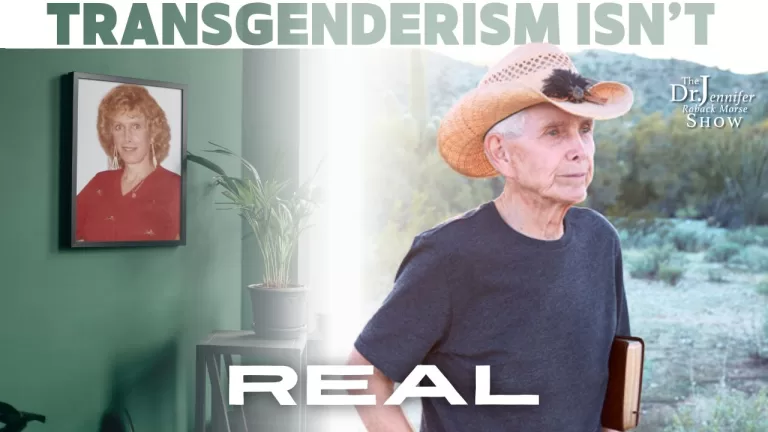Bishops need to regain the trust of their flock.
by Fr. Paul Sullins
This article was first published August 24, 2018, at Mercatornet.com.
Paul Sullins is a sociologist and Catholic priest with four books and over 100 journal articles, book chapters and research reports on issues of faith and culture to his credit. He has studied the issue of sexual abuse by Catholic priests and gives his views on the current crisis in this MercatorNet interview. A former Episcopalian priest, Fr Sullins was ordained as a Catholic priest by then-Cardinal Ted McCarrick.
********
MercatorNet: It didn’t seem possible for any more surprises to pop up. And then there was Cardinal McCarrick, or rather, ex-Cardinal McCarrick. And then there was Pennsylvania. Is anything else coming down the pike?
It’s very likely. The Pennsylvania grand jury report was clear that the misbehaviour they could find and document suggested that there was more out there
that they couldn’t find or document. Recently an American bishop spoke of a homosexual subculture among the bishops,
something that’s often been suspected but never acknowledged.
We had an abuse scandal in early 1990s people often forget about, then in 2002, and now 2018. I hope it all comes out; it would be painful but also very
good for the Church.
I hope American Catholics will have a #MeToo moment which will encourage many victims to share their stories. It may be a quixotic hope, but the best thing
the bishops could do is to disclose anything further themselves, voluntarily in confession, before the knowledge is forced out of them by action of
law.
A few priest perpetrators have done this (all abusers of women, by my count, but I could be mistaken), but to my knowledge no bishop has said, “I did the
following (previously undisclosed) actions or made the following errors in judgement that I now realize were sinful and betrayed the trust of God’s
people. I thought it was right at the time, and no law is forcing me to say this, but my conscience now convicts me that I was more concerned for the
career and good image of the priest than the healing of the victim. I ask the forgiveness of the victims involved, and I am submitting my resignation
to the Holy Father.”
Nothing could restore trust in our episcopacy more than some statements like this. I wouldn’t completely put this kind of revival past our bishops, especially
if we pray for it to happen. But I’m not holding my breath.
MercatorNet: The media’s focus has been on male homosexual predation in Catholic institutions. But if reports like the Pennsylvania Grand Jury’s were made for other churches or large organisations, would the results be significantly different?
The results would not be significantly different in the scale of abuse; it’s actually somewhat lower among Catholic clergy than for comparable groups like
Protestant clergy, schoolteachers, camp counselors.
But those groups experience predominantly male-on-female abuse, while for Catholic priests it is predominantly male-on-male abuse. The numbers are very
clear on this: in the John Jay Report (2004),
female victims were a majority only for the 5 percent of abuse that was with prepubescent children; 95 percent of the abuse reported was with children
over the age of 8, and of these incidents 83 percent were male-on-male abuse. The 2011 John Jay Report states: “More than three-quarters of the acts of sexual abuse of youths by Catholic priests, as shown in the nature and scope study, were same-sex
acts (priests abusing male victims).” In the recent Pennsylvania grand jury report, 77 percent of abusers were homosexual predators.
The Church has a particular, unique problem with male-on-male predation by priests. The highest estimate I know (Richard Sipe’s) of the proportion of Catholic
priests with homosexual orientation is about 25 percent. By this estimate, 83 percent of the abuse in the John Jay Report was perpetrated by 25 percent
of priests. Statistically this implies that (most conservatively) same-sex attracted priests were 15 times more likely to engage in child sex abuse
than opposite-sex attracted priests.
MercatorNet: The late Richard Sipe, a sociologist and a former priest, claimed that a large proportion of the Catholic clerical community was not practicing celibacy. In your experience is that true?
There’s no way to know for sure, but I doubt it. In multiple anonymous surveys, for example by the Los Angeles Times, only a small proportion
of priests report that they are not celibate, or even struggle with celibacy. The John Jay Report, written by secular social scientists with no axe
to grind on this issue, concluded that celibacy was not a factor in child sexual abuse by priests.
Sipe (who did valuable work on this issue, and who sadly passed away only a few weeks ago) left Catholic religious life to marry; and based his conclusions
on clinical samples he saw in his psychiatric practice, not the general population of priests, so his conclusions may well be biased. The John Jay
Report notes that 80 percent of priests who seek or are remanded to treatment for sexual misbehaviour are not practicing celibacy.
MercatorNet: In the distant past, failures in celibacy took the form of concubinage or love affairs as in The Thorn Birds. Are homosexual attachments more damaging for spiritual health of the Catholic clergy?
Is it more spiritually damaging to sodomize than to rape, or for a male victim to be sodomized than for a female victim to be raped? Aquinas would say
yes, and at some level of moral reasoning I would have to agree. But both are heinous crimes, and the distinction is not very dispositive in this crisis,
in my opinion.
Any sexual attachment by a priest in violation of his vow/obligation of celibacy is damaging to his spiritual health (though the causation may run more
the other way; a lack of spiritual health leads to seeking a sexual attachment). I would not want to make abstract comparisons in the present situation.
MercatorNet: You’ve mentioned the existence of homosexual cultures within some Catholic seminaries. When did this begin? What made it possible?
Short answer: probably in the 1970s, due to the general rise in sexual laxity during the Sexual Revolution that invaded Catholic thinking and life.
Donald Cozzens, a prominent seminary rector, in a controversial 2000 book, raised the concern that friendship networks of gay priests and seminarians in
most dioceses or seminaries in the United States had become an exclusive subculture or clique “who interact continually with each other and seldom
with outsiders, and who develop shared experiences, understandings and meanings.”
Such cliques had become so pervasive, including among seminary faculty, Cozzens argued, that they tended to marginalize heterosexual seminarians or priests.
Cozzens argued that “straight men in environments populated by a significant number of gays experience a sense of destabilization. They wrestle with
a certain self-doubt, a feeling that they don’t fit in. On both psychic and spiritual levels, they are not ‘at home’.”
Cozzens’ concerns echoed those made by psychoanalyst Richard Sipe in a series of influential books on the sexuality of Catholic priests. Using institutional
and expert reports, Sipe found that during the 1980s, compared to the 1960s, “the reporting of homosexual behaviours increased significantly and the
reliable estimates almost doubled”. The difficulties were concentrated in a minority of dioceses with high concentrations (the estimates were between
42 and 75 percent) of active homosexual clergy.
The main cause of this situation, Sipe alleged, was a shift away from the structure of highly regulated seminary life beginning in the early 1970s which
led, in the closely confined all-male environment of the Catholic seminary, to the development of homosocial organizations in some seminaries that
encouraged “relationships with sexual objects”. The secrecy of the confessional and a culture of official denial hindered church authorities from addressing
the problem.
Subsequent research has confirmed Cozzens’ and Sipe’s concerns. In priests surveys a majority ordained the past twenty years responded “yes” when asked
if there was a homosexual subculture in their seminary.
In formal Catholic teaching the presence of homosexual men in the priesthood is problematic on its face, and so their prevalence constitutes a disadvantage
of celibacy. Catholic teaching holds homosexuality to be a disordered inclination which is not conducive to godliness and human well-being. Though
persons, through self-denial and self-control, can achieve Christian maturity in spite of the condition, it is not a recommendation for Church leadership.
Catholic norms formally prohibit any known homosexual man from being ordained.
MercatorNet: As long ago as 2008 Richard Sipe published documented allegations about Cardinal McCarrick on his website. They were openly available. Yet no one in authority acknowledged them. What was going on?
No idea. Clearly a lack of interest on the part of the hierarchy to investigate.
MercatorNet: The US Catholic bishops say that they are determined to purge their own ranks of abusers and colleagues who are soft on abuse. Do you think that they will eventually succeed? If they do, will the crisis be over?
The US Catholic bishops cannot be trusted to solve this problem, which is largely of their own making. This is true even though a good bit of the accusations
against them is unfair. It will take papal intervention. I support the idea of a mass resignation, with the Pope ruling on which resignations to accept,
as happened in Chile. This would put the problem squarely in Pope Francis’ lap. Where it should be.
MercatorNet: You are a former Episcopalian priest who converted to Catholicism. You were ordained by Cardinal McCarrick. You must feel betrayed by him, but has it shaken your faith in the essentials of the Catholic Church?
None of this affects my faith in the Church, whose indefectibility comes from Christ himself. Jesus weeps with the victims, and that is where the Church
should be. The grace of the sacraments does not depend on the perfection of any ordained person to be effective (else persons at my Masses would be
in big trouble). No bishop who has ever ordained anyone has been sinless, and the sins of the man who ordained me don’t dismay me from the faith in
the slightest.
(I could go on at length. We all come to the Church because we are sinners, not because we are righteous. Almost all the patriarchs and saints committed
serious sins. David, the most celebrated king of Israel, in whose lineage Christ was born and who was called a man after God’s own heart, committed
adultery and murder. Good and evil are not commensurable; we are not saved by the good we do; one’s good doesn’t make up for one’s evil, and one’s
evil doesn’t prevent one’s good.)
Frankly, I encountered worse difficulties on this issue (homosexual abuse by clergy) in the Episcopal Church, but they were not at all shy to report to
the police, and more successful in keeping it out of the press.
I have a profound sense of betrayal and dismay, not just by McCarrick but by all our bishops, who overlooked and enabled him, to the extent of secret settlements.
Now when I hear a bishop say something or make a decision, I have to wonder, what is he not telling us? What gross sin is he hiding?
Rev. D. Paul Sullins is Research Professor of Sociology and Director of the Leo Institute for Catholic Social Research at the Catholic University of America, and Senior Research Associate at the Ruth Institute. He has written four books and over 100 journal articles, book chapters and research reports on issues of faith and culture. His latest book is Keeping the Vow: the Untold Story of Married Catholic Priests (Oxford, 2015). Formerly Episcopalian, Fr Sullins is a married Catholic priest with an inter-racial family of three children, two adopted.


